Mediterranean
Southampton | Cádiz | Palermo | Valletta | Piraeus | Kusadasi | Bodrum | Limassol | Alexandria | La Goulette | Cartagena | Gibraltar | Southampton
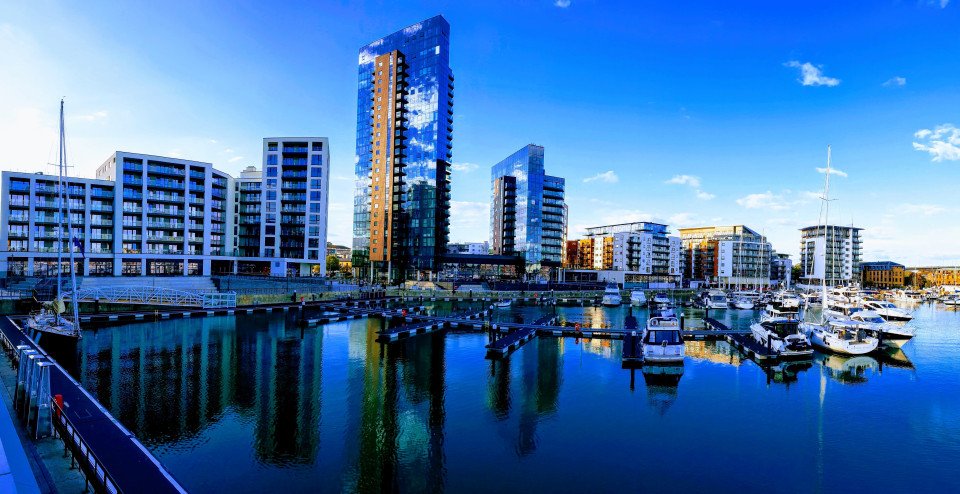
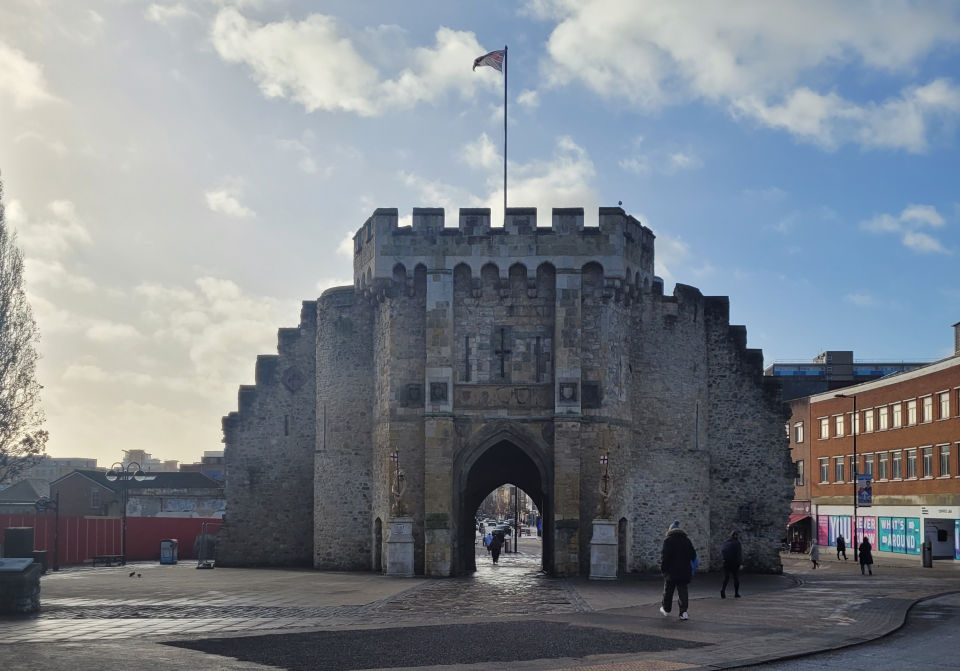
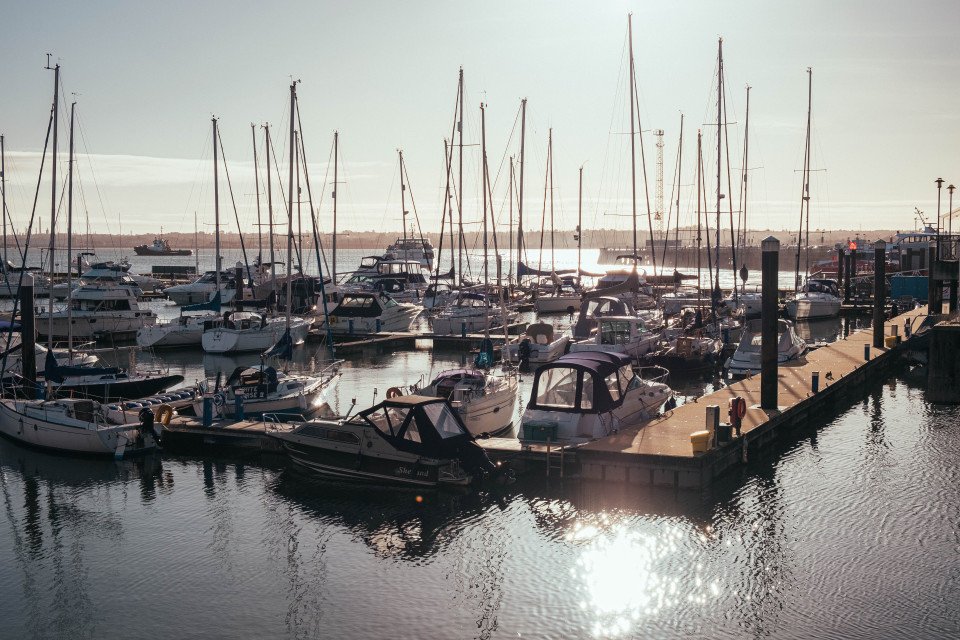
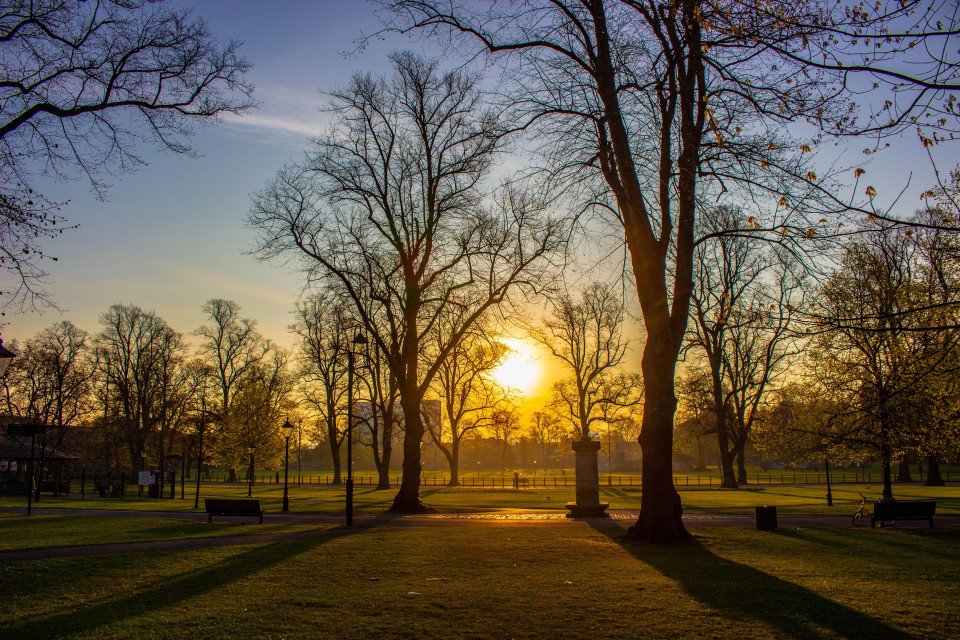

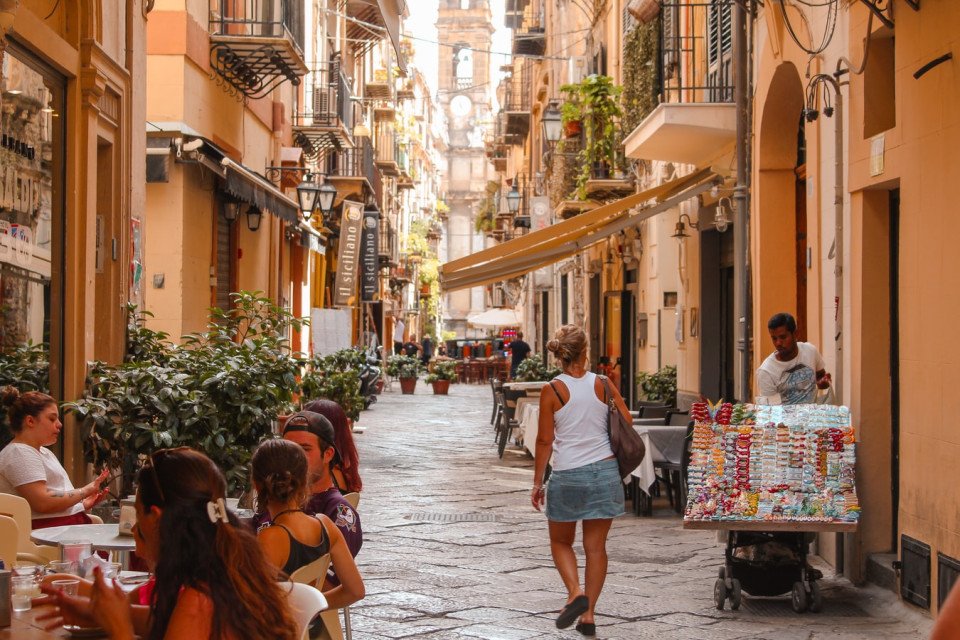
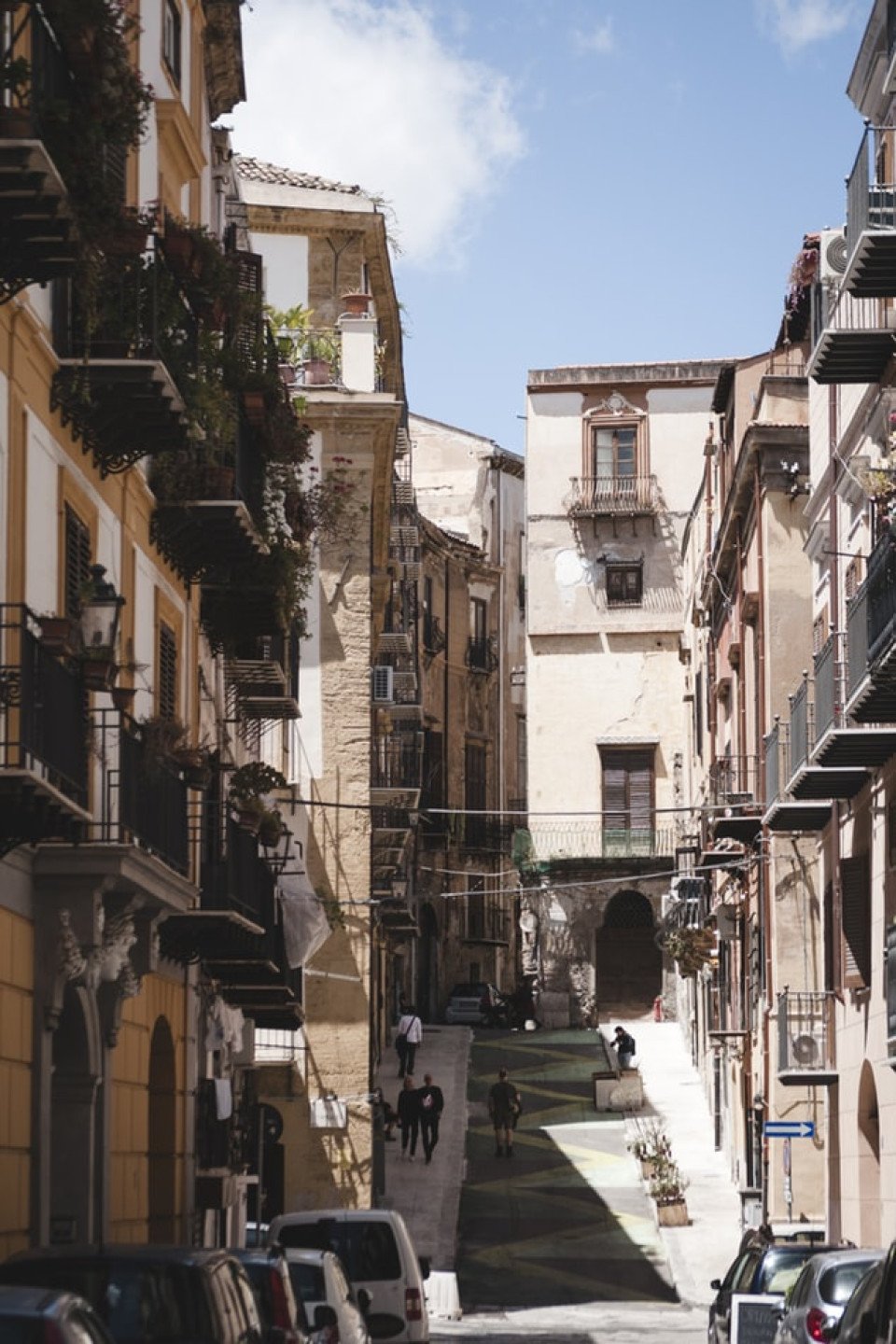
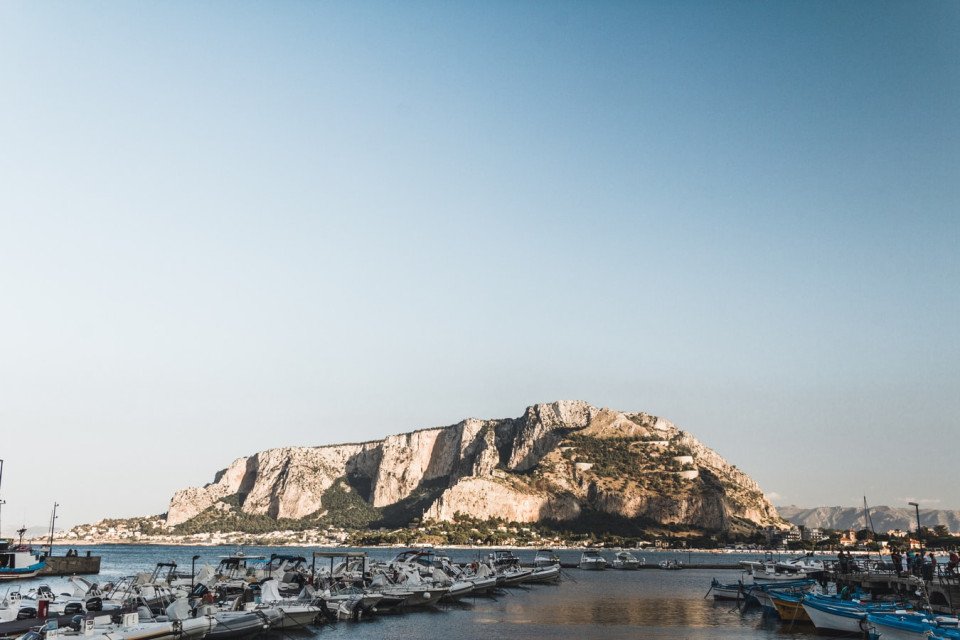

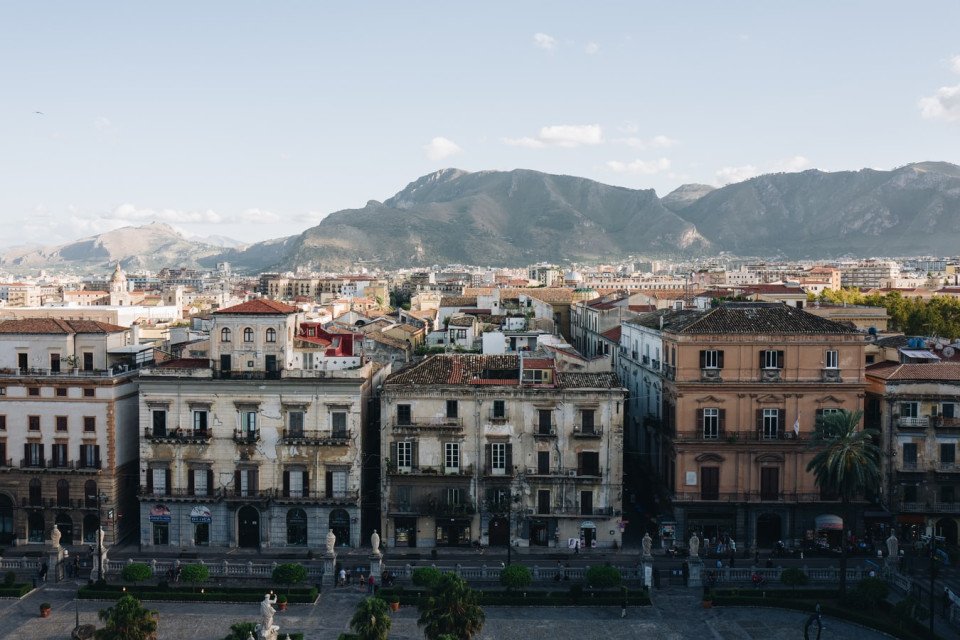








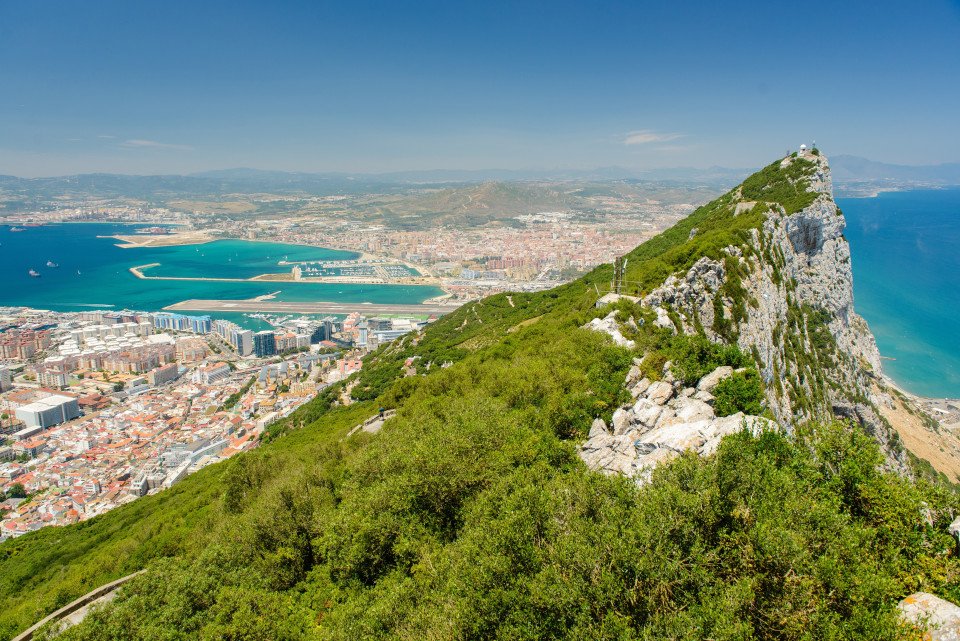

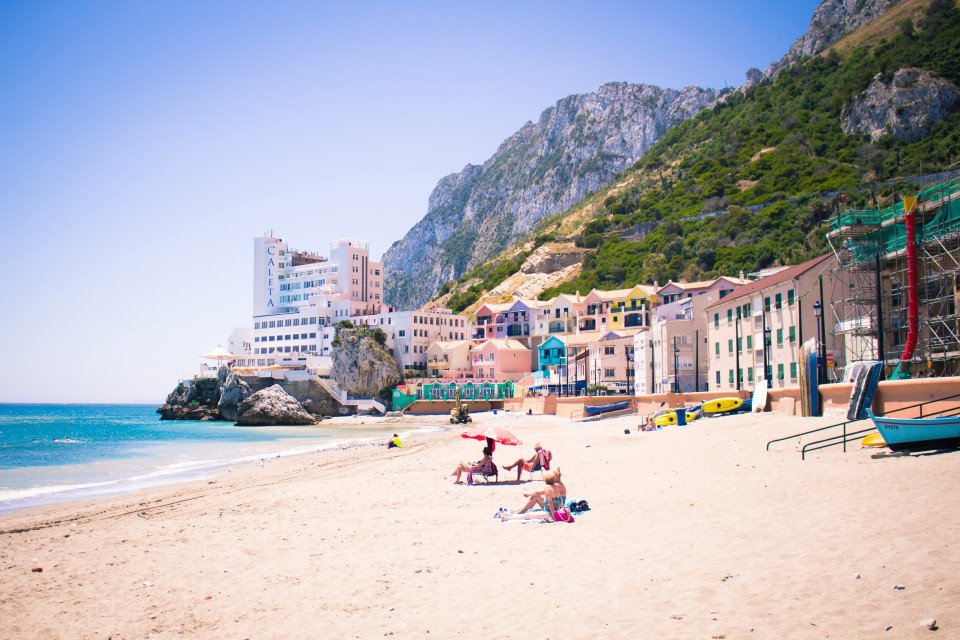
(Prices correct as of today’s date, are updated daily, are subject to change and represent genuine availability at time of update).
This cruise only holiday is financially protected by ABTA
Please click here to check the essential travel requirements before booking this cruise.
Want to add a hotel stay or change your flights?
Just call our team of cruise specialists to help build your dream cruise holiday today!
Prices based on 2 people sharing. Cruise only price does not include flights. Fly-cruise price may vary by chosen UK airport.
Prices based on 1 solo passenger. Cruise only price does not include flights. Fly-cruise price may vary by chosen UK airport.
Prices based on 3 people sharing. Cruise only price does not include flights. Fly-cruise price may vary by chosen UK airport.
Prices based on 4 people sharing. Cruise only price does not include flights. Fly-cruise price may vary by chosen UK airport.
Southampton
Lying near the head of Southampton Water, a peninsula between the estuaries of the Rivers Test and Itchen, Southampton is Britain’s largest cruise port. It has been one of England’s major ports since the Middle Ages, when it exported wool and hides from the hinterland and imported wine fro... Lying near the head of Southampton Water, a peninsula between the estuaries of the Rivers Test and Itchen, Southampton is Britain’s largest cruise port. It has been one of England’s major ports since the Middle Ages, when it exported wool and hides from the hinterland and imported wine from Bordeaux. The city suffered heavy damage during World War Two and as a result the centre has been extensively rebuilt, but there are still some interesting medieval buildings including the Bargate, one of the finest city gatehouses in England. Read More



Cádiz
Believed to be the oldest town on the Iberian Peninsula, the Andalusian port of Cádiz enjoys a stunning location at the edge of a six-mile promontory. The town itself, with 3,000 years of history, is characterised by pretty white houses with balconies often adorned with colourful flowers.... Believed to be the oldest town on the Iberian Peninsula, the Andalusian port of Cádiz enjoys a stunning location at the edge of a six-mile promontory. The town itself, with 3,000 years of history, is characterised by pretty white houses with balconies often adorned with colourful flowers. As you wander around be sure to take a stroll through the sizeable Plaza de Espãna, with its large monument dedicated to the first Spanish constitution, which was signed here in 1812. Cádiz has two pleasant seafront promenades which boast fine views of the Atlantic Ocean, and has a lovely park, the Parque Genoves, located close to the sea with an open-air theatre and attractive palm garden. Also notable is the neo-Classical cathedral, capped by a golden dome. Read More


Palermo
Once the intellectual capital of southern Europe, Palermo has always been at the crossroads of civilization. Favorably situated on a crescent-shaped bay at the foot of Monte Pellegrino, it has attracted almost every culture touching the Mediterranean world. To Palermo's credit, it has abso... Once the intellectual capital of southern Europe, Palermo has always been at the crossroads of civilization. Favorably situated on a crescent-shaped bay at the foot of Monte Pellegrino, it has attracted almost every culture touching the Mediterranean world. To Palermo's credit, it has absorbed these diverse cultures into a unique personality that is at once Arab and Christian, Byzantine and Roman, Norman and Italian. The city's heritage encompasses all of Sicily's varied ages, but its distinctive aspect is its Arab-Norman identity, an improbable marriage that, mixed in with Byzantine and Jewish elements, created some resplendent works of art. No less noteworthy than the architecture is Palermo's chaotic vitality, on display at some of Italy's most vibrant outdoor markets, public squares, street bazaars, and food vendors, and above all in its grand climax of Italy's most spectacular passeggiata (the leisurely social stroll along the principal thoroughfare). Read More

Valletta
Malta's capital, the minicity of Valletta, has ornate palaces and museums protected by massive fortifications of honey-color limestone. Houses along the narrow streets have overhanging wooden balconies for people-watching from indoors. Generations ago they gave housebound women a window on... Malta's capital, the minicity of Valletta, has ornate palaces and museums protected by massive fortifications of honey-color limestone. Houses along the narrow streets have overhanging wooden balconies for people-watching from indoors. Generations ago they gave housebound women a window on the world of the street. The main entrance to town is through the City Gate (where all bus routes end), which leads onto Triq Repubblika (Republic Street), the spine of the grid-pattern city and the main shopping street. Triq Mercante (Merchant Street) parallels Repubblika to the east and is also good for strolling. From these two streets, cross streets descend toward the water; some are stepped. Valletta's compactness makes it ideal to explore on foot. City Gate and the upper part of Valletta are experiencing vast redevelopment that includes a new Parliament Building and open-air performance venue. The complex, completed mid-2013, has numerous pedestrian detours in place along with building noise and dust. Before setting out along Republic Street, stop at the tourist information office on Merchant Street for maps and brochures. Read More


Piraeus
It's no wonder that all roads lead to the fascinating and maddening metropolis of Athens. Lift your eyes 200 feet above the city to the Parthenon, its honey-color marble columns rising from a massive limestone base, and you behold architectural perfection that has not been surpassed in 2,5... It's no wonder that all roads lead to the fascinating and maddening metropolis of Athens. Lift your eyes 200 feet above the city to the Parthenon, its honey-color marble columns rising from a massive limestone base, and you behold architectural perfection that has not been surpassed in 2,500 years. But, today, this shrine of classical form dominates a 21st-century boomtown. To experience Athens—Athína in Greek—fully is to understand the essence of Greece: ancient monuments surviving in a sea of cement, startling beauty amid the squalor, tradition juxtaposed with modernity. Locals depend on humor and flexibility to deal with the chaos; you should do the same. The rewards are immense. Although Athens covers a huge area, the major landmarks of the ancient Greek, Roman, and Byzantine periods are close to the modern city center. You can easily walk from the Acropolis to many other key sites, taking time to browse in shops and relax in cafés and tavernas along the way. From many quarters of the city you can glimpse "the glory that was Greece" in the form of the Acropolis looming above the horizon, but only by actually climbing that rocky precipice can you feel the impact of the ancient settlement. The Acropolis and Filopappou, two craggy hills sitting side by side; the ancient Agora (marketplace); and Kerameikos, the first cemetery, form the core of ancient and Roman Athens. Along the Unification of Archaeological Sites promenade, you can follow stone-paved, tree-lined walkways from site to site, undisturbed by traffic. Cars have also been banned or reduced in other streets in the historical center. In the National Archaeological Museum, vast numbers of artifacts illustrate the many millennia of Greek civilization; smaller museums such as the Goulandris Museum of Cycladic Art Museum and the Byzantine and Christian Museum illuminate the history of particular regions or periods. Athens may seem like one huge city, but it is really a conglomeration of neighborhoods with distinctive characters. The Eastern influences that prevailed during the 400-year rule of the Ottoman Empire are still evident in Monastiraki, the bazaar area near the foot of the Acropolis. On the northern slope of the Acropolis, stroll through Plaka (if possible by moonlight), an area of tranquil streets lined with renovated mansions, to get the flavor of the 19th-century's gracious lifestyle. The narrow lanes of Anafiotika, a section of Plaka, thread past tiny churches and small, color-washed houses with wooden upper stories, recalling a Cycladic island village. In this maze of winding streets, vestiges of the older city are everywhere: crumbling stairways lined with festive tavernas; dank cellars filled with wine vats; occasionally a court or diminutive garden, enclosed within high walls and filled with magnolia trees and the flaming trumpet-shaped flowers of hibiscus bushes. Formerly run-down old quarters, such as Thission, Gazi and Psirri, popular nightlife areas filled with bars and mezedopoleia (similar to tapas bars), are now in the process of gentrification, although they still retain much of their original charm, as does the colorful produce and meat market on Athinas. The area around Syntagma Square, the tourist hub, and Omonia Square, the commercial heart of the city about 1 km (½ mi) northwest, is distinctly European, having been designed by the court architects of King Otho, a Bavarian, in the 19th century. The chic shops and bistros of ritzy Kolonaki nestle at the foot of Mt. Lycabettus, Athens's highest hill (909 feet). Each of Athens's outlying suburbs has a distinctive character: in the north is wealthy, tree-lined Kifissia, once a summer resort for aristocratic Athenians, and in the south and southeast lie Glyfada, Voula, and Vouliagmeni, with their sandy beaches, seaside bars, and lively summer nightlife. Just beyond the city's southern fringes is Piraeus, a bustling port city of waterside fish tavernas and Saronic Gulf views. Read More

Kusadasi
Whilst the busy resort town of Kusadasi offers much in the way of shopping and dining – not to mention a flourishing beach life scene, the real jewel here is Ephesus and the stunning ruined city that really take centre stage. With only 20% of the classical ruins having been excavated, this... Whilst the busy resort town of Kusadasi offers much in the way of shopping and dining – not to mention a flourishing beach life scene, the real jewel here is Ephesus and the stunning ruined city that really take centre stage. With only 20% of the classical ruins having been excavated, this archaeological wonder has already gained the status as Europe’s most complete classical metropolis. And a metropolis it really is; built in the 10th century BC this UNESCO World Heritage site is nothing short of spectacular. Although regrettably very little remains of the Temple of Artemis (one of the seven wonders of the ancient world), the superb Library of Celsus’ façade is practically intact and it is one of life’s great joys to attend an evening performance in the illuminated ruins once all the tourists have left. The history of the city is fascinating and multi-layered and it is well worth reading up on this beforehand if a visit is planned. Another point of interest for historians would be the house of the Virgin Mary, located on the romantically named Mount Nightingale and just nine kilometres away from Ephesus proper. Legend has it that Mary (along with St. John) spent her final years here, secluded from the rest of the population, spreading Christianity. An edifying experience, even for non-believers. For the less historical minded amongst you, Kusadasi offers plenty in the way of activities. After a stroll through the town, jump in a taxi to Ladies’ Beach (men are allowed), sample a Turkish kebap on one of the many beachfront restaurants and enjoy the clement weather. If you do want to venture further afield, then the crystal clear beaches of Guzelcamli (or the Millipark), the cave of Zeus and the white scalloped natural pools at Pamukkale, known as Cleopatra’s pools, are definitely worth a visit. Read More



Limassol
A major commercial port, cruise ship port of call, and wine-making center on the south coast, Limassol, 75 km (47 miles) from Nicosia, is a bustling, cosmopolitan town, with some of the liveliest nightlife on the island. Luxury hotels, apartments, and guesthouses stretch along 12 km (7 mil... A major commercial port, cruise ship port of call, and wine-making center on the south coast, Limassol, 75 km (47 miles) from Nicosia, is a bustling, cosmopolitan town, with some of the liveliest nightlife on the island. Luxury hotels, apartments, and guesthouses stretch along 12 km (7 miles) of seafront, with the most luxurious ones just to the north of town. In the center, the elegant, modern shops of Makarios Avenue (where you'll mainly find clothes and shoes) contrast with those of pedestrian-only Agiou Andreou in the old part of town, where local handicrafts such as lace, embroidery, and basketware prevail; make sure you avoid shopping on Wednesday and Saturday afternoons, when many shops close at 2 pm. A luxurious marina that will hold 650 yachts as well as house apartments, shops, and restaurants should further boost the town's lively appeal. Read More


Alexandria
Founded by Alexander the Great, Alexandria was Egypt's capital for over 1,000 years. Now, it is visited by tourists looking to enjoy some diving and those interested in the Great Library, one of the Seven Wonders of the Ancient World.



La Goulette
La Goulette is a charming coastal town located just north of Tunis, known for its picturesque waterfront and vibrant Mediterranean atmosphere. Traditionally a bustling port, La Goulette serves as a gateway to the capital and is famous for its beautiful beaches and seaside promenades. The t... La Goulette is a charming coastal town located just north of Tunis, known for its picturesque waterfront and vibrant Mediterranean atmosphere. Traditionally a bustling port, La Goulette serves as a gateway to the capital and is famous for its beautiful beaches and seaside promenades. The town is renowned for its delicious seafood restaurants, offering a taste of local cuisine, particularly fresh fish and traditional Tunisian dishes. Visitors can explore the lively market area, where local artisans sell crafts and fresh produce. La Goulette also features historical sites, such as the old port and various mosques, reflecting its rich cultural heritage. With its blend of relaxation, gastronomy, and cultural experiences, La Goulette is an inviting destination for those looking to enjoy the coastal charm of Tunisia. Read More


Cartagena
A Mediterranean city and naval station located in the Region of Murcia, southeastern Spain, Cartagena’s sheltered bay has attracted sailors for centuries. The Carthaginians founded the city in 223BC and named it Cartago Nova; it later became a prosperous Roman colony, and a Byzantine tradi... A Mediterranean city and naval station located in the Region of Murcia, southeastern Spain, Cartagena’s sheltered bay has attracted sailors for centuries. The Carthaginians founded the city in 223BC and named it Cartago Nova; it later became a prosperous Roman colony, and a Byzantine trading centre. The city has been the main Spanish Mediterranean naval base since the reign of King Philip II, and is still surrounded by walls built during this period. Cartagena’s importance grew with the arrival of the Spanish Bourbons in the 18th century, when the Navidad Fortress was constructed to protect the harbour. In recent years, traces of the city’s fascinating past have been brought to light: a well-preserved Roman Theatre was discovered in 1988, and this has now been restored and opened to the public. During your free time, you may like to take a mini-cruise around Cartagena's historic harbour: these operate several times a day, take approximately 40 minutes and do not need to be booked in advance. Full details will be available at the port. Read More
Gibraltar
Tagged on to the end of Iberia, the intriguing British outpost of Gibraltar is dominated by a sandy peninsula and the stunning 1,400-feet-high limestone Rock. Although small, Gibraltar has always been seen as having great strategic importance on account of its advantageous position where t... Tagged on to the end of Iberia, the intriguing British outpost of Gibraltar is dominated by a sandy peninsula and the stunning 1,400-feet-high limestone Rock. Although small, Gibraltar has always been seen as having great strategic importance on account of its advantageous position where the Atlantic meets the Mediterranean, just 12 miles from the coast of Africa. Ever popular with British holidaymakers, Gibraltar is very much a home from home, boasting excellent duty-free shopping in many familiar British high street shops. Please note: Gibraltar’s small size and narrow winding roads mean that excursions are operated by 22-seater mini-buses, accompanied by a driver/guide. Local health and safety regulations prohibit the carriage of walking aids and collapsible wheelchairs on these vehicles. If you do wish to bring a mobility aid, we can arrange the Rock Tour by taxi, which has extra space. If this suits your requirements, please advise the Tours and Travel office when you join the ship, as numbers are limited. Read More


Southampton
Lying near the head of Southampton Water, a peninsula between the estuaries of the Rivers Test and Itchen, Southampton is Britain’s largest cruise port. It has been one of England’s major ports since the Middle Ages, when it exported wool and hides from the hinterland and imported wine fro... Lying near the head of Southampton Water, a peninsula between the estuaries of the Rivers Test and Itchen, Southampton is Britain’s largest cruise port. It has been one of England’s major ports since the Middle Ages, when it exported wool and hides from the hinterland and imported wine from Bordeaux. The city suffered heavy damage during World War Two and as a result the centre has been extensively rebuilt, but there are still some interesting medieval buildings including the Bargate, one of the finest city gatehouses in England. Read More
Southampton
At Sea
At Sea
Cádiz
At Sea
At Sea
Palermo
Valletta
At Sea
Piraeus
Kusadasi
Bodrum
At Sea
Limassol
At Sea
Alexandria
At Sea
At Sea
La Goulette
At Sea
Cartagena
Gibraltar
At Sea
At Sea
Southampton
Southampton
Southampton
Lying near the head of Southampton Water, a peninsula between the estuaries of the Rivers Test and Itchen, Southampton is Britain’s largest cruise port. It has been one of England’s major ports since the Middle Ages, when it exported wool and hides from the hinterland and imported wine fro... Lying near the head of Southampton Water, a peninsula between the estuaries of the Rivers Test and Itchen, Southampton is Britain’s largest cruise port. It has been one of England’s major ports since the Middle Ages, when it exported wool and hides from the hinterland and imported wine from Bordeaux. The city suffered heavy damage during World War Two and as a result the centre has been extensively rebuilt, but there are still some interesting medieval buildings including the Bargate, one of the finest city gatehouses in England. Read More
At Sea

At Sea

Cádiz

Cádiz
Believed to be the oldest town on the Iberian Peninsula, the Andalusian port of Cádiz enjoys a stunning location at the edge of a six-mile promontory. The town itself, with 3,000 years of history, is characterised by pretty white houses with balconies often adorned with colourful flowers.... Believed to be the oldest town on the Iberian Peninsula, the Andalusian port of Cádiz enjoys a stunning location at the edge of a six-mile promontory. The town itself, with 3,000 years of history, is characterised by pretty white houses with balconies often adorned with colourful flowers. As you wander around be sure to take a stroll through the sizeable Plaza de Espãna, with its large monument dedicated to the first Spanish constitution, which was signed here in 1812. Cádiz has two pleasant seafront promenades which boast fine views of the Atlantic Ocean, and has a lovely park, the Parque Genoves, located close to the sea with an open-air theatre and attractive palm garden. Also notable is the neo-Classical cathedral, capped by a golden dome. Read More
At Sea

At Sea

Palermo
Palermo
Once the intellectual capital of southern Europe, Palermo has always been at the crossroads of civilization. Favorably situated on a crescent-shaped bay at the foot of Monte Pellegrino, it has attracted almost every culture touching the Mediterranean world. To Palermo's credit, it has abso... Once the intellectual capital of southern Europe, Palermo has always been at the crossroads of civilization. Favorably situated on a crescent-shaped bay at the foot of Monte Pellegrino, it has attracted almost every culture touching the Mediterranean world. To Palermo's credit, it has absorbed these diverse cultures into a unique personality that is at once Arab and Christian, Byzantine and Roman, Norman and Italian. The city's heritage encompasses all of Sicily's varied ages, but its distinctive aspect is its Arab-Norman identity, an improbable marriage that, mixed in with Byzantine and Jewish elements, created some resplendent works of art. No less noteworthy than the architecture is Palermo's chaotic vitality, on display at some of Italy's most vibrant outdoor markets, public squares, street bazaars, and food vendors, and above all in its grand climax of Italy's most spectacular passeggiata (the leisurely social stroll along the principal thoroughfare). Read More
Valletta

Valletta
Malta's capital, the minicity of Valletta, has ornate palaces and museums protected by massive fortifications of honey-color limestone. Houses along the narrow streets have overhanging wooden balconies for people-watching from indoors. Generations ago they gave housebound women a window on... Malta's capital, the minicity of Valletta, has ornate palaces and museums protected by massive fortifications of honey-color limestone. Houses along the narrow streets have overhanging wooden balconies for people-watching from indoors. Generations ago they gave housebound women a window on the world of the street. The main entrance to town is through the City Gate (where all bus routes end), which leads onto Triq Repubblika (Republic Street), the spine of the grid-pattern city and the main shopping street. Triq Mercante (Merchant Street) parallels Repubblika to the east and is also good for strolling. From these two streets, cross streets descend toward the water; some are stepped. Valletta's compactness makes it ideal to explore on foot. City Gate and the upper part of Valletta are experiencing vast redevelopment that includes a new Parliament Building and open-air performance venue. The complex, completed mid-2013, has numerous pedestrian detours in place along with building noise and dust. Before setting out along Republic Street, stop at the tourist information office on Merchant Street for maps and brochures. Read More
At Sea

Piraeus

Piraeus
It's no wonder that all roads lead to the fascinating and maddening metropolis of Athens. Lift your eyes 200 feet above the city to the Parthenon, its honey-color marble columns rising from a massive limestone base, and you behold architectural perfection that has not been surpassed in 2,5... It's no wonder that all roads lead to the fascinating and maddening metropolis of Athens. Lift your eyes 200 feet above the city to the Parthenon, its honey-color marble columns rising from a massive limestone base, and you behold architectural perfection that has not been surpassed in 2,500 years. But, today, this shrine of classical form dominates a 21st-century boomtown. To experience Athens—Athína in Greek—fully is to understand the essence of Greece: ancient monuments surviving in a sea of cement, startling beauty amid the squalor, tradition juxtaposed with modernity. Locals depend on humor and flexibility to deal with the chaos; you should do the same. The rewards are immense. Although Athens covers a huge area, the major landmarks of the ancient Greek, Roman, and Byzantine periods are close to the modern city center. You can easily walk from the Acropolis to many other key sites, taking time to browse in shops and relax in cafés and tavernas along the way. From many quarters of the city you can glimpse "the glory that was Greece" in the form of the Acropolis looming above the horizon, but only by actually climbing that rocky precipice can you feel the impact of the ancient settlement. The Acropolis and Filopappou, two craggy hills sitting side by side; the ancient Agora (marketplace); and Kerameikos, the first cemetery, form the core of ancient and Roman Athens. Along the Unification of Archaeological Sites promenade, you can follow stone-paved, tree-lined walkways from site to site, undisturbed by traffic. Cars have also been banned or reduced in other streets in the historical center. In the National Archaeological Museum, vast numbers of artifacts illustrate the many millennia of Greek civilization; smaller museums such as the Goulandris Museum of Cycladic Art Museum and the Byzantine and Christian Museum illuminate the history of particular regions or periods. Athens may seem like one huge city, but it is really a conglomeration of neighborhoods with distinctive characters. The Eastern influences that prevailed during the 400-year rule of the Ottoman Empire are still evident in Monastiraki, the bazaar area near the foot of the Acropolis. On the northern slope of the Acropolis, stroll through Plaka (if possible by moonlight), an area of tranquil streets lined with renovated mansions, to get the flavor of the 19th-century's gracious lifestyle. The narrow lanes of Anafiotika, a section of Plaka, thread past tiny churches and small, color-washed houses with wooden upper stories, recalling a Cycladic island village. In this maze of winding streets, vestiges of the older city are everywhere: crumbling stairways lined with festive tavernas; dank cellars filled with wine vats; occasionally a court or diminutive garden, enclosed within high walls and filled with magnolia trees and the flaming trumpet-shaped flowers of hibiscus bushes. Formerly run-down old quarters, such as Thission, Gazi and Psirri, popular nightlife areas filled with bars and mezedopoleia (similar to tapas bars), are now in the process of gentrification, although they still retain much of their original charm, as does the colorful produce and meat market on Athinas. The area around Syntagma Square, the tourist hub, and Omonia Square, the commercial heart of the city about 1 km (½ mi) northwest, is distinctly European, having been designed by the court architects of King Otho, a Bavarian, in the 19th century. The chic shops and bistros of ritzy Kolonaki nestle at the foot of Mt. Lycabettus, Athens's highest hill (909 feet). Each of Athens's outlying suburbs has a distinctive character: in the north is wealthy, tree-lined Kifissia, once a summer resort for aristocratic Athenians, and in the south and southeast lie Glyfada, Voula, and Vouliagmeni, with their sandy beaches, seaside bars, and lively summer nightlife. Just beyond the city's southern fringes is Piraeus, a bustling port city of waterside fish tavernas and Saronic Gulf views. Read More
Kusadasi

Kusadasi
Whilst the busy resort town of Kusadasi offers much in the way of shopping and dining – not to mention a flourishing beach life scene, the real jewel here is Ephesus and the stunning ruined city that really take centre stage. With only 20% of the classical ruins having been excavated, this... Whilst the busy resort town of Kusadasi offers much in the way of shopping and dining – not to mention a flourishing beach life scene, the real jewel here is Ephesus and the stunning ruined city that really take centre stage. With only 20% of the classical ruins having been excavated, this archaeological wonder has already gained the status as Europe’s most complete classical metropolis. And a metropolis it really is; built in the 10th century BC this UNESCO World Heritage site is nothing short of spectacular. Although regrettably very little remains of the Temple of Artemis (one of the seven wonders of the ancient world), the superb Library of Celsus’ façade is practically intact and it is one of life’s great joys to attend an evening performance in the illuminated ruins once all the tourists have left. The history of the city is fascinating and multi-layered and it is well worth reading up on this beforehand if a visit is planned. Another point of interest for historians would be the house of the Virgin Mary, located on the romantically named Mount Nightingale and just nine kilometres away from Ephesus proper. Legend has it that Mary (along with St. John) spent her final years here, secluded from the rest of the population, spreading Christianity. An edifying experience, even for non-believers. For the less historical minded amongst you, Kusadasi offers plenty in the way of activities. After a stroll through the town, jump in a taxi to Ladies’ Beach (men are allowed), sample a Turkish kebap on one of the many beachfront restaurants and enjoy the clement weather. If you do want to venture further afield, then the crystal clear beaches of Guzelcamli (or the Millipark), the cave of Zeus and the white scalloped natural pools at Pamukkale, known as Cleopatra’s pools, are definitely worth a visit. Read More
Bodrum

At Sea

Limassol

Limassol
A major commercial port, cruise ship port of call, and wine-making center on the south coast, Limassol, 75 km (47 miles) from Nicosia, is a bustling, cosmopolitan town, with some of the liveliest nightlife on the island. Luxury hotels, apartments, and guesthouses stretch along 12 km (7 mil... A major commercial port, cruise ship port of call, and wine-making center on the south coast, Limassol, 75 km (47 miles) from Nicosia, is a bustling, cosmopolitan town, with some of the liveliest nightlife on the island. Luxury hotels, apartments, and guesthouses stretch along 12 km (7 miles) of seafront, with the most luxurious ones just to the north of town. In the center, the elegant, modern shops of Makarios Avenue (where you'll mainly find clothes and shoes) contrast with those of pedestrian-only Agiou Andreou in the old part of town, where local handicrafts such as lace, embroidery, and basketware prevail; make sure you avoid shopping on Wednesday and Saturday afternoons, when many shops close at 2 pm. A luxurious marina that will hold 650 yachts as well as house apartments, shops, and restaurants should further boost the town's lively appeal. Read More
At Sea

Alexandria

Alexandria
Founded by Alexander the Great, Alexandria was Egypt's capital for over 1,000 years. Now, it is visited by tourists looking to enjoy some diving and those interested in the Great Library, one of the Seven Wonders of the Ancient World.
At Sea

At Sea

La Goulette

La Goulette
La Goulette is a charming coastal town located just north of Tunis, known for its picturesque waterfront and vibrant Mediterranean atmosphere. Traditionally a bustling port, La Goulette serves as a gateway to the capital and is famous for its beautiful beaches and seaside promenades. The t... La Goulette is a charming coastal town located just north of Tunis, known for its picturesque waterfront and vibrant Mediterranean atmosphere. Traditionally a bustling port, La Goulette serves as a gateway to the capital and is famous for its beautiful beaches and seaside promenades. The town is renowned for its delicious seafood restaurants, offering a taste of local cuisine, particularly fresh fish and traditional Tunisian dishes. Visitors can explore the lively market area, where local artisans sell crafts and fresh produce. La Goulette also features historical sites, such as the old port and various mosques, reflecting its rich cultural heritage. With its blend of relaxation, gastronomy, and cultural experiences, La Goulette is an inviting destination for those looking to enjoy the coastal charm of Tunisia. Read More
At Sea

Cartagena

Cartagena
A Mediterranean city and naval station located in the Region of Murcia, southeastern Spain, Cartagena’s sheltered bay has attracted sailors for centuries. The Carthaginians founded the city in 223BC and named it Cartago Nova; it later became a prosperous Roman colony, and a Byzantine tradi... A Mediterranean city and naval station located in the Region of Murcia, southeastern Spain, Cartagena’s sheltered bay has attracted sailors for centuries. The Carthaginians founded the city in 223BC and named it Cartago Nova; it later became a prosperous Roman colony, and a Byzantine trading centre. The city has been the main Spanish Mediterranean naval base since the reign of King Philip II, and is still surrounded by walls built during this period. Cartagena’s importance grew with the arrival of the Spanish Bourbons in the 18th century, when the Navidad Fortress was constructed to protect the harbour. In recent years, traces of the city’s fascinating past have been brought to light: a well-preserved Roman Theatre was discovered in 1988, and this has now been restored and opened to the public. During your free time, you may like to take a mini-cruise around Cartagena's historic harbour: these operate several times a day, take approximately 40 minutes and do not need to be booked in advance. Full details will be available at the port. Read More
Gibraltar
Gibraltar
Tagged on to the end of Iberia, the intriguing British outpost of Gibraltar is dominated by a sandy peninsula and the stunning 1,400-feet-high limestone Rock. Although small, Gibraltar has always been seen as having great strategic importance on account of its advantageous position where t... Tagged on to the end of Iberia, the intriguing British outpost of Gibraltar is dominated by a sandy peninsula and the stunning 1,400-feet-high limestone Rock. Although small, Gibraltar has always been seen as having great strategic importance on account of its advantageous position where the Atlantic meets the Mediterranean, just 12 miles from the coast of Africa. Ever popular with British holidaymakers, Gibraltar is very much a home from home, boasting excellent duty-free shopping in many familiar British high street shops. Please note: Gibraltar’s small size and narrow winding roads mean that excursions are operated by 22-seater mini-buses, accompanied by a driver/guide. Local health and safety regulations prohibit the carriage of walking aids and collapsible wheelchairs on these vehicles. If you do wish to bring a mobility aid, we can arrange the Rock Tour by taxi, which has extra space. If this suits your requirements, please advise the Tours and Travel office when you join the ship, as numbers are limited. Read More
At Sea

At Sea

Southampton
Southampton
Lying near the head of Southampton Water, a peninsula between the estuaries of the Rivers Test and Itchen, Southampton is Britain’s largest cruise port. It has been one of England’s major ports since the Middle Ages, when it exported wool and hides from the hinterland and imported wine fro... Lying near the head of Southampton Water, a peninsula between the estuaries of the Rivers Test and Itchen, Southampton is Britain’s largest cruise port. It has been one of England’s major ports since the Middle Ages, when it exported wool and hides from the hinterland and imported wine from Bordeaux. The city suffered heavy damage during World War Two and as a result the centre has been extensively rebuilt, but there are still some interesting medieval buildings including the Bargate, one of the finest city gatehouses in England. Read More

Southampton

Cádiz

Palermo

Valletta

Piraeus

Kusadasi

Limassol

Alexandria

La Goulette

Cartagena

Gibraltar

Southampton
*This holiday is generally suitable for persons with reduced mobility. For customers with reduced mobility or any medical condition that may require special assistance or arrangements to be made, please notify your Cruise Concierge at the time of your enquiry, so that we can provide specific information as to the suitability of the holiday, as well as make suitable arrangements with the Holiday Provider on your behalf.
What's Included with
P&O Cruises
Accommodation
Breakfast, lunch, dinner and snacks in a choice of included dining venues
Entertainment throughout the day and evening
Use of swimming pools, hot tubs, fitness centre and leisure facilities where available
Complimentary shuttle service from ship to port where available
Port taxes
Themed events and discos
Tea and coffee in seleted venues
Porterage of luggage from port to cabin
Youth programmes for 2-17 year olds
Free of charge babysitting from 6 months - 4 years of age. Daily from 6pm to 2am
Explore Aurora
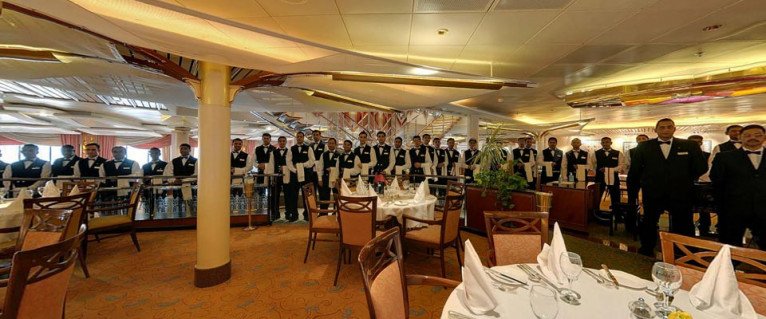













Alexandria Restaurant
Club Dining at the Alexandria Restaurant. Choose a particular Club Dining seating and you’ll dine at the same time and table each night and enjoy the same company. It’s the way many a friendship has been made on board.
Medina Restaurant
Freedom Dining at the Medina Restaurant. Like to escape the usual routine on holiday? Then you’ll love the flexibility of Freedom Dining. Opt for an early dinner one night and a late supper the next; you can shape each day as you please.
Sindhu
Showcasing a menu which is a triumph of perfectly balanced spices, delicate flavours and wonderful aromas, this restaurant has become a firm favourite with many. So why not take a seat amidst its sumptuous fabrics and opulent décor to experience a treat for your senses?
The Beach House
Located in the buffet restaurant during the evening, The Beach House offers great ocean views to go along with a casual menu of grills and seafood. When the sun is shining, there’s also the opportunity to sit outside on the terrace.
The Glass House
In The Glass House we bring the world of wine to you… varieties from all four corners of the globe, by the glass, by the bottle and, if you fancy, right by a plate of fabulous food.


Dance Classes
There are coupled dance instructors onboard who offer a variety of dance lessons. The main types of dance offered are ballroom and Latin. As well a group lessons, it is also possible to arrange 1 to 1 tuition. On some occasions, there are celebrity dance instructors on board too. Everyone is welcome regardless of experience.
Library
The ship's well-stocked library is perfect for finding a great book to enjoy by the pool. Choose from an extensive range of fiction and non-fiction books, or browse through the tempting selection of books which are available for purchase, in an area operated by Waterstones book shop.


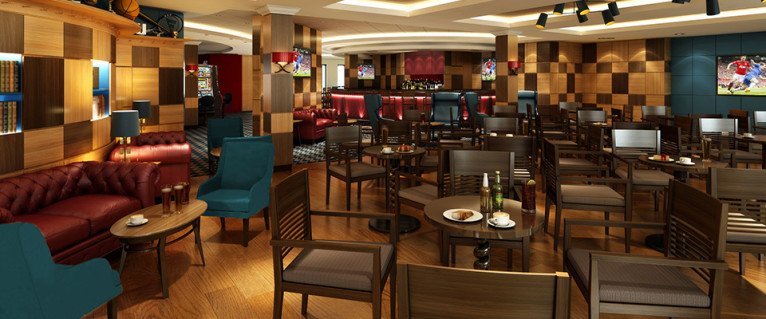

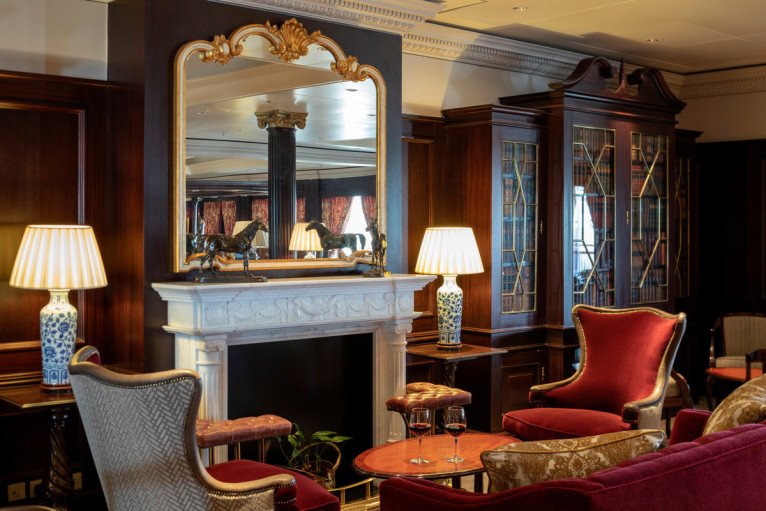
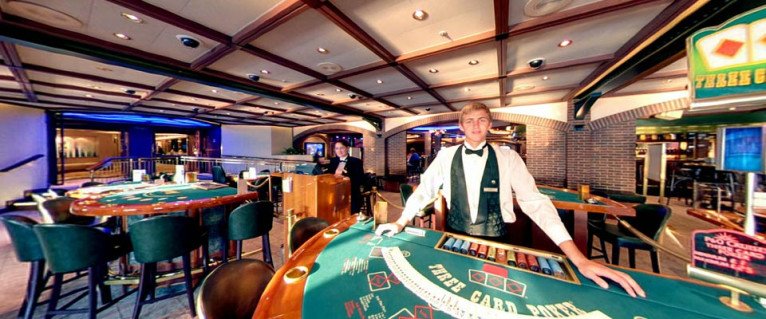


The Playhouse Cinema
This fantastic cinema screens feature films throughout the day and into the evening. The Playhouse is located midships on D Deck, next to the Photo Gallery. You can watch a great range of films. There are 213 spacious and comfortable chairs and good visibility for everyone. In addition to films, The Playhouse is also the venue for classical recitals, lectures, port enhancement talks, and much more.
The Crow's Nest
At 105 feet above the waterline, this stylish cocktail bar is higher than the bridge and affords the ship's most amazing views. By day you can watch the glistening sea as the world floats by in this comfortable and relaxing atmosphere. As evening draws in The Crow's Nest comes into its own; with a light tickling of the ivories to set the mood, there's no better vantage point from which to enjoy a dramatic sunset at sea.
Champions
If you just want to socialise, catch up with friends over a few bevvies, or carry off the cup in a pub quiz, touch down in Champions. For lovers of all things sporting, it's a slam dunk. It's the place to enjoy a drink while celebrating all things great about British sport.
The Curzon Theatre
You’ll see spectacular productions on stage at The Curzon, a lavish theatre seating up to 652 people. In the Curzon Theatre you'll find there's multiple performances on selected nights, so you can plan your evening however you like. Catch a show before dinner or enjoy one after. On Aurora you'll enjoy entertainment such as cabaret performances, stand-up comedy, interactive game shows, quizzes, and talent shows.
Anderson's
Traditional sofas, bookcases and panelled walls create a very British ambience and the feel of an exclusive country club. You will find Anderson's on Promenade Deck. Welcoming and elegant and ideally located next to the Curzon Theatre, its refined setting is perfect for a pre-show drink or a warming nightcap. The bar is named after Arthur Anderson, the founder of P&O, who is said to have had an amazing attention to detail. So we certainly believe he would have approved of the long bar, the ornate fireplace and the traditional artworks.
Monte Carlo Casino
The flashing lights of the slot machines and the suspense of blackjack beckons, as does a great night out. As night falls our casinos come alive. Featuring the latest in slot machines and gaming tables, our friendly croupiers are on hand to oversee the evening’s events. During the day there are gaming workshops for those who’ve never played before and at night, tournaments for those who believe Lady Luck is on their side. The gaming tables include Three Card Poker, Blackjack and of course, Roulette, one of the oldest and most popular games of chance.
Raffles Bar
A wonderful area to meet up with new friends for a mid-afternoon break or after dinner drink, the court offers lovely views of the atrium and its' 35 foot centre-piece sculpture. Comfortable sofas and chairs, in conjunction with soft lighting, create a relaxing ambience. Raffles Court also offers access to Vanderbilt's card room and Sindhu.
Pool Bars
Our pool bars offer a casual place to socialise and relax in throughout the day and into the evening. On a hot day nothing is better than lounging by one of our pools, sipping a cool drink, or two, and feeling yourself completely unwind.


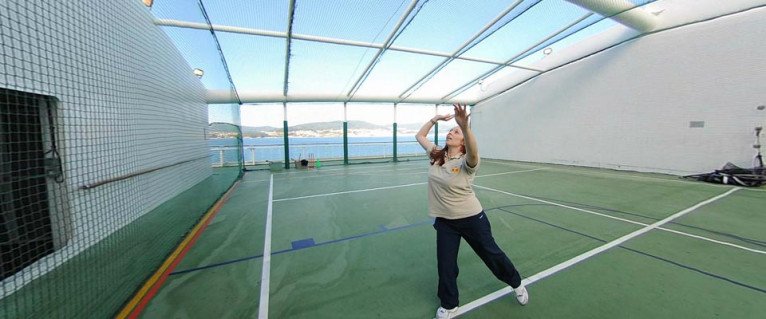
Gymnasium
Passengers can watch the waves as they work out with all the latest equipment, including exercise bikes, rowing machines, running machines, steppers, resistance machines and a range of weights. After the workout, visitors can head to the Oasis Spa for a relaxing massage, a stimulating therapeutic treatment or a warming and cleansing sauna.
Oasis Spa
Putting the aah in spa. Think luxurious spaces to relax in, salon treatments and the aroma of scented oils. You can enjoy a warming and cleansing visit to the sauna and steam rooms. Or opt for the very latest in facials, manicures, pedicures, aromatherapy or massages, in one of the luxurious treatment rooms, each with a fantastic ocean view
Sports Court
Whether you enjoy the friendly competition of an organised tournament or prefer to play casually with your own party, short tennis, football, volleyball, basketball and cricket are just some of the options available in the Sports Court.
Sun Deck

- The Crow's Nest
- Library
- Skydome
- Sports Court
- Golf Nets

Lido Deck

- Standard Inside Cabins
- Standard Balcony Cabins
- Riviera Pool
- Riviera Bar
- Treatment Rooms
- Oasis Spa
- Lido Grill
- Oasis Salon
- Whirlpool Spa
- Crystal Bar
- Crystal Pool
- Horizon Restaurant
- Beach House
- Pennant Bar

A Deck

- Suites (higher level)
- Balcony Cabins
- Outside Cabins
- Inside Staterooms
- Single Outside Cabins
- Riviera Pool
- Launderette
- Whirlpool Spa
- Fitness Room

B Deck

- Penthouse Suites
- Suites (lower level)
- Mini-Suites
- Deluxe Balcony Cabins
- Balcony Cabins
- Standard Outside Cabins
- Larger Inside Cabins
- Standard Inside Cabins

D Deck

- Standard Outside Cabins
- Deluxe Balcony Cabins
- Larger Outside Cabins
- Standard Inside Cabins
- Single Balcony Cabins
- Raffles Bar
- Raffles Court
- Sindhu Restaurant
- Vanderbilt's
- Photo Gallery
- The Playhouse
- The Glass House
- Terrace Bar
- Terrace Pool
- Whirlpool Spa

C Deck

- Suites
- Standard Balcony Cabins
- Larger Outside Cabins
- Standard Outside Cabins
- Single Outside Cabins
- Inside Cabins

Prom Deck

- Curzon Theatre
- Anderson's
- Charlie's
- Mayfair Court
- Shopping
- Masquerade
- Monte Carlo Casino
- Champions
- Carmen's

E Deck

- Standard Outside Cabins
- Standard Inside Cabins
- Alexandria Restaurant
- Medina Restaurant
- Shopping
- Explorers

F Deck

- Standard Outside Cabins
- Standard Inside Cabins
- Reception
- Palm Court
- Launderette

G Deck

- Medical Centre



Inside Cabin
Air-conditioned inside cabins have two lower beds that are convertible to a king-size bed with wardrobe and drawer space. The bathroom has a shower plus a hairdryer. There is a vanity/writing desk, and a TV for your enjoyment, , telephone, safe and tea and coffee making facilities with mineral water on arrival.
Facilities
- Queen or Twin Configuration
- Shower
- TV
- Toiletries Provided
- Room Service Available
- Safe
- Hair Dryer
- Telephone
- Desk
Single Cabin
With the choice of either an inside or outside location, these cabins are perfect for the single traveller.
These beautifully designed cabins feature a single bed, shower, sink, and WC. Outside cabins will have a window or porthole. Inside cabins will have a mirror.
Facilities
- One Single Bed
- Shower
- Toiletries Provided
- Room Service Available
- TV
- Safe
- Hair Dryer
- Telephone
- Desk

Sea View
Air-conditioned Sea view cabins have two lower beds that are convertible to a king-size bed with wardrobe and drawer space. The bathroom has a shower, or shower over bath, plus a hairdryer. There is a vanity/writing desk, and a TV for your enjoyment, plus a radio, telephone, safe and tea and coffee making facilities. Sea view cabins may have a window or portholes with mineral water on arrival.
If a balcony is not top of your list, but you're seeking great value and a sea view, then our Sea view cabins are ideal. Well designed and with all those little extras.
Some Sea View cabins have a fully obstructed view.
Facilities
- Queen or Twin Configuration
- Shower
- TV
- Toiletries Provided
- Room Service Available
- Safe
- Hair Dryer
- Telephone
- Desk


Deluxe Balcony Cabin
Fully air-conditioned deluxe balcony cabins enjoy two lower beds convertible to queen-size bed. Bathrooms boast a bath with shower or shower only, sink, vanity unit and WC plus a hairdryer.
There is a sitting area with sofa, chair and table, TV, plus radio and telephone, writing desk, refrigerator and tea/coffee making facilities. There is also a safe. Floor to ceiling sliding glass doors lead to your balcony with recliner chairs and table.
Mineral water is provided on arrival along with a pamper pack, an atlas and binoculars.
Facilities
- Queen or Twin Configuration
- Shower
- TV
- Safe
- Toiletries Provided
- Room Service Available
- Hair Dryer
- Telephone
- Desk
Balcony Cabins
Fully air-conditioned balcony cabins enjoy two lower beds convertible to king-size bed. Bathrooms boast a hairdryer, bath with shower or shower only. There is a chair and table, TV, and telephone, writing desk, refrigerator and tea/coffee making facilities. There is also a safe. Floor to ceiling sliding glass doors lead to your balcony with recliner chairs and table with mineral water on arrival.
Facilities
- Queen or Twin Configuration
- Shower
- Safe
- Toiletries Provided
- Room Service Available
- TV
- Hair Dryer
- Telephone
- Desk


Suites
Fully air-conditioned suites enjoy two lower beds convertible to king-size bed. Bathrooms boast a whirlpool bath , shower and plus luxurious premier pamper pack, bathrobe & slippers. Additionally there is a useful walk-in dressing area with a hairdryer.
The lounge has a sofa & chairs plus dining table and chairs, with a mini stereo and a TV plus and telephone, writing desk, refrigerator and tea/coffee making facilities. There is also a safe. Floor to ceiling sliding glass doors lead to your balcony with loungers, chairs and table. Suites have an optional butler service, magazine and newspaper selection, atlas and binoculars, plus fruit basket, mineral water, flowers, Champagne and chocolates on arrival.
Facilities
- Queen or Twin Configuration
- Shower
- Whirlpool Bath
- Lounge Area
- Dining Area
- Vanity Area
- Toiletries Provided
- Room Service Available
- Suite Benefits
- Butler Service
Mini-Suites
Fully air-conditioned mini-suites boast a separate bedroom area with two lower beds convertible to queen-size bed. Bathrooms boast a whirlpool bath, shower, dual sink vanity unit and WC plus luxurious premier pamper pack, bathrobe & slippers and a hairdryer.
There is a sofa, chair and table, a TV and DVD player, plus radio and telephone, writing desk, refrigerator and tea/coffee making facilities. There is also a safe. Floor to ceiling sliding glass doors lead to your balcony with chairs and table.
Mini-suites have a magazine and newspaper selection, atlas and binoculars, plus fruit basket, mineral water, flowers, Champagne and chocolates on arrival and daily canapés.
Facilities
- Queen or Twin Configuration
- Shower
- Toiletries Provided
- Room Service Available
- TV
- Safe
- Hair Dryer
- Telephone
- Desk



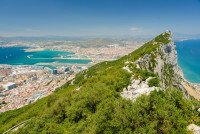

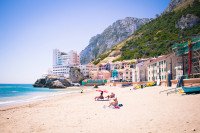
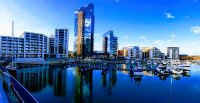
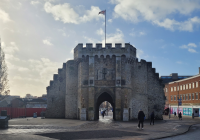
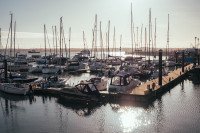


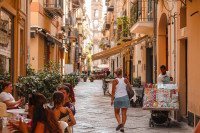
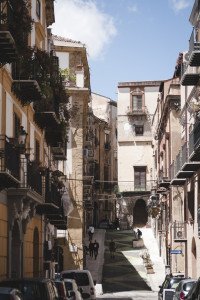
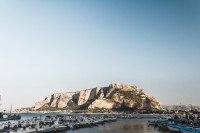

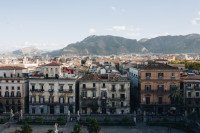







-large_thumb.jpg)









